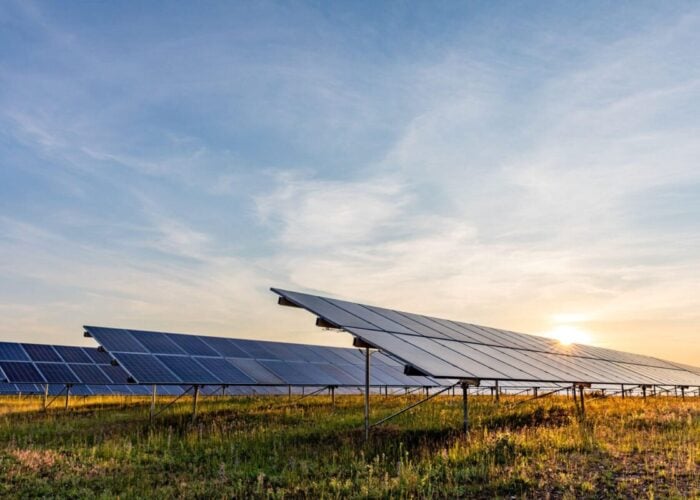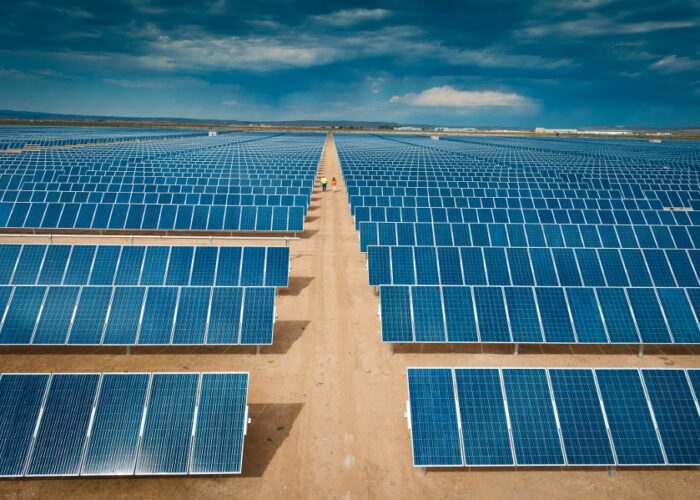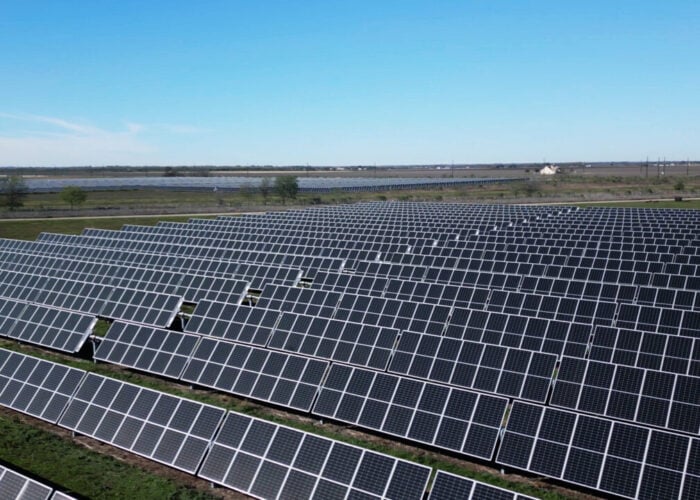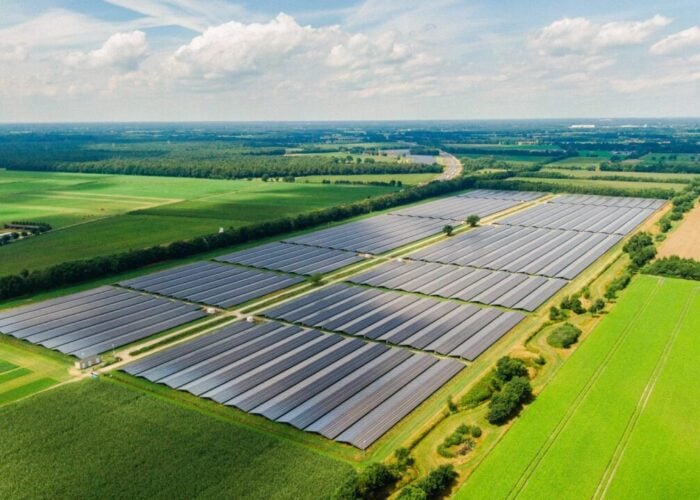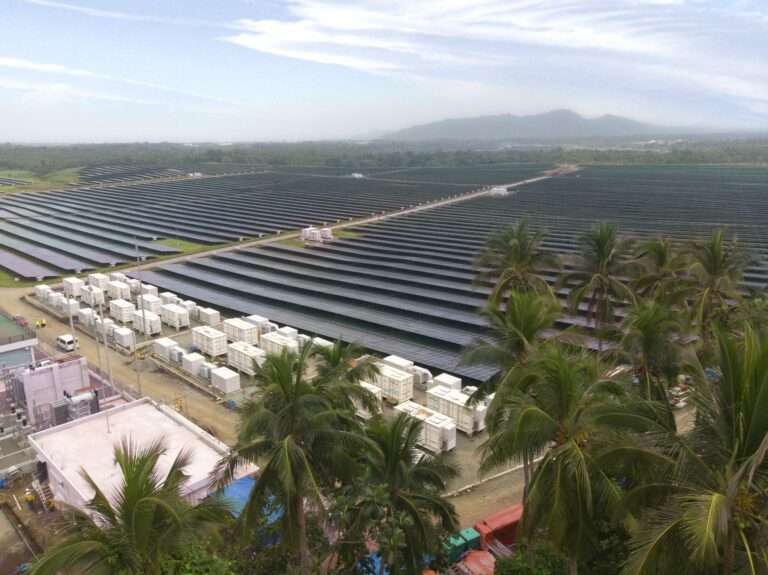
Southeast Asian countries have been ramping up their installed solar capacity. From 2023-2025, investments in renewables will exceed US$76 billion, according to research firm Rystad Energy, and this investment amount has shown no signs of slowing down.
Much of this expenditure will be driven by solar, wind and geothermal investments, with Vietnam, the Philippines and Indonesia leading the expenditure in low-carbon sectors in Southeast Asia from 2022 to 2026.
Try Premium for just $1
- Full premium access for the first month at only $1
- Converts to an annual rate after 30 days unless cancelled
- Cancel anytime during the trial period
Premium Benefits
- Expert industry analysis and interviews
- Digital access to PV Tech Power journal
- Exclusive event discounts
Or get the full Premium subscription right away
Or continue reading this article for free
Vietnam spends more than US$35 billion on different types of renewables, with onshore wind accounting for a major part of expenditure, but there remains considerable potential for the country’s solar sector.
A range of projects
In May 2023, the Vietnamese government approved a plan to develop renewable energy sources for electricity production, including building rooftop solar for residential and commercial premises. Half of office buildings and residential houses will use self-produced rooftop solar power for on-site consumption by 2030, but the generated electricity will not be sold to the national electricity system.
The Philippines is the second-largest Southeast Asian country in expenditure, having committed over US$30billion to the renewables sector. Its spending on solar will be the highest compared to other countries in the region, exceeding US$10 billion from 2022-2026.
Tristan Pheh, junior analyst of renewables and power at Rystad Energy, says the Philippines is the most active market in terms of providing offtaking mechanisms to solar developers, such as auctions and power supply agreements with electricity distributors.
The law also allows for full foreign ownership of renewable energy projects, which could appeal to foreign renewables developers.
Moreover, the Philippines has also set up an ambitious solar growth plan. In the National Renewable Energy Programme, published by the country’s energy department, the Philippines is aiming to have an installed solar capacity of 27GW by 2040.
Global Energy Monitor’s data shows the Philippines’ solar farm capacity, as of January 2023, was 1.8GW. Several projects will take place in the near future to reach its solar growth goal, including a 1.3GW floating solar PV (FPV) project on the Laguna Lake, while the Philippines Department of Energy (DOE) also awarded 1.96GW of solar PV projects in its most recent Green Energy Auction Round.
Of the 1.96GW, almost all was ground-mount PV due for construction between 2024 and 2026, with 90MW awarded to floating solar projects and around 10MW to rooftop installations. The DOE has released a full list of the auction winners, comprising a range of projects
Behind Vietnam and the Philippines is Indonesia as its expenditure on renewables is expected to reach about US$30 billion, with hydropower, geothermal and solar being the areas of greatest interest.
“Vietnam, the Philippines, and Indonesia have abundant renewable energy resources, including but not limited to solar, wind, geothermal and hydropower potential,” says Pheh.
“The growth of renewables allows diversification in energy supply and promotes energy security, as these countries are typically reliant on the use of coal.”
Challenges of developing solar
However, there are multiple challenges when investing in renewables in Southeast Asia. Pheh says that policy support is also a major factor in solar growth, as incentives in most countries are sometimes inconsistent in timing and unclear.
“For example, Vietnam went two years without providing an offtakeing mechanism for solar, and this year it announced a temporary price for completed – but not yet commissioned – projects that are nearly 50% of the feed-in tariff price. In Malaysia, solar auctions have also been suspended since 2021, and regulators have only this year reintroduced utility-scale solar through corporate power purchase agreements (PPAs).”
Pheh adds that the availability of land is one of the major issues that could hamper the development of solar in the region.
“Southeast Asian land is widely used for agriculture,” says Pheh. While this can be alleviated in part by the use of floating solar projects, land remains a premium across the region. “In Thailand, for example, developers have faced disputes with the agriculture industry over the use of land reserved for plantations.”
Floating solar in Southeast Asia
Previously, PV Tech reported that the global FPV market will surpass 6GW by 2031, with China, India and Southeast Asia set to deploy the lion’s share, as developers in Southeast Asia look for space for new projects.
By 2031, China will have cumulatively installed over 13GW of FPV, with India and Indonesia set to install over 10GW and 8GW respectively. Other Southeast Asian countries, including Vietnam (3,265MW), Thailand (3,265MW), Malaysia (2,201MW) and Laos (1,874MW), are also four of the top ten countries to exceed 500MW of cumulative FPV installations by 2031.
According to a report produced by the National Renewable Energy Laboratory, Thailand is planning to build over 2.7GW of FPV on nine different hydroelectric reservoirs by 2037. Thailand boasts significant FPV technical potential of 33–65GW on reservoirs and 68–152GW on natural waterbodies.
Malaysia also has a higher potential for FPV on reservoirs (23–54GW) compared to natural waterbodies (13–30GW).
Speaking of this phenomenon, Pheh says the geography of most countries with high solar irradiance allows for solar PV to be built on naturally occurring bodies of water,
“The implementation of floating solar PV also complements the extensive use of hydropower in the region, as hydro reservoirs are the most conducive environment for floating PVs,” Pheh adds.
Foreign investment
Not only do Southeast Asian renewables companies develop solar projects in the region, but also businesses from Europe. In September, German renewables firm BayWa r.e announced a partnership with Swiss-based infrastructure investment manager SUSI Partners, directing capital from SUSI Partner’s Southeast Asia-focused Asia Energy Transition Fund to develop rooftop PV projects with commercial and industrial corporations.
This partnership centres on the end-to-end development, construction, and operation of PV projects, with each of the projects boasting a capacity of up to 20MWp, initiated through PPAs with established corporations.
Thailand, Malaysia, Vietnam, the Philippines and Indonesia will be the primary markets of the partnership.
“We hope that due to this partnership, companies will be able to adopt PPAs and rooftop installations more quickly and efficiently,” says Niranpal Singh, managing director of Malaysia at BayWa r.e. APAC, drawing attention to the need for projects to consider their local economies during the construction and commissioning processes. “Projects still need to be locally developed on country-based economics.
“In time this might change and the opening of cross-border participation by private asset owners and investors will start this trend.”



